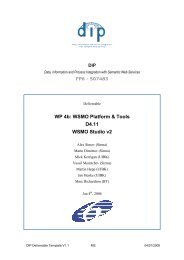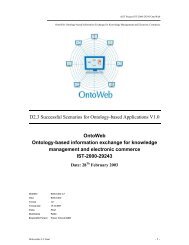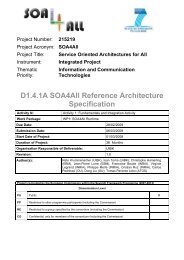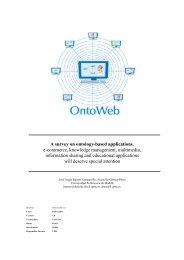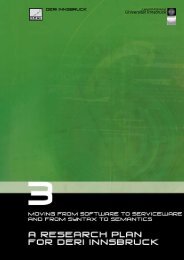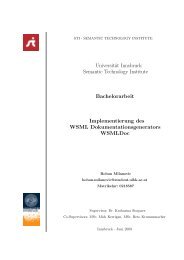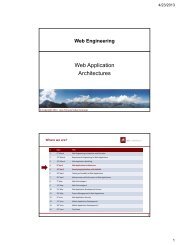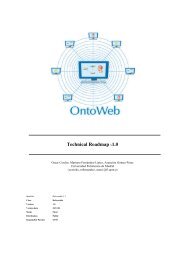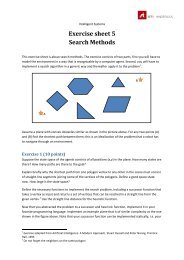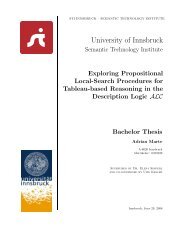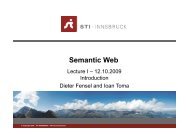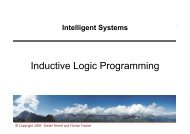D7 â Dynamic Ontology Management System (Design) - STI Innsbruck
D7 â Dynamic Ontology Management System (Design) - STI Innsbruck
D7 â Dynamic Ontology Management System (Design) - STI Innsbruck
You also want an ePaper? Increase the reach of your titles
YUMPU automatically turns print PDFs into web optimized ePapers that Google loves.
D07_01_DOMS_F01<br />
statement (Subject(S), Predicate(P), Object(O)) and checks the consistency of each statement with the<br />
information already present in the repository and draws information, if necessary, as:<br />
• if P equals type, then it infers that O must be a class<br />
• if P equals subClassOf, then it infers that both S and O are classes<br />
• if P equals subPropertyOf, then it infers that both S and O are properties<br />
• if P equals domain or range, then it infers that S is a property and O is a class<br />
3.2.5 The RQL Query Module<br />
Sesame uses a variant of RQL ([Broekstra et al., 2002], [Alexaki et al., 2000]) as compared to the<br />
declarative language originally developed within the European IST project C-Web. This version of<br />
RQL supports both optional and multiple domain and range restrictions.<br />
The module parses the query, builds a query tree model and is then fed to the query optimiser. The<br />
optimiser then transforms the query model into an efficient, equivalent model. This is illustrated in<br />
Figure 6.<br />
Figure 6: The RQL query module ([Broekstra et al., 2002])<br />
The query model is subsequently evaluated in streams, thereby facilitating the retrieval of data<br />
without caching the data. This model translates RQL queries into a set of calls to the RAL, thereby<br />
allowing the evaluation of the query to be done in the query engine itself unlike the RDF Suite where<br />
the query is performed in the engine of the DBMS (see Figure 7).<br />
3.2.6 The RDF Export Module<br />
This module supports the usage of both the schema and non-schema part of the data. It exports the<br />
contents of a repository formatted in XML-serialised RDF.<br />
<strong>Ontology</strong> editors like OntoEdit can then use either the schema or non-schema or both from the<br />
extracted information.<br />
IST-2001-33174 © h-TechSight Consortium October 2002 Page 14 of 27



